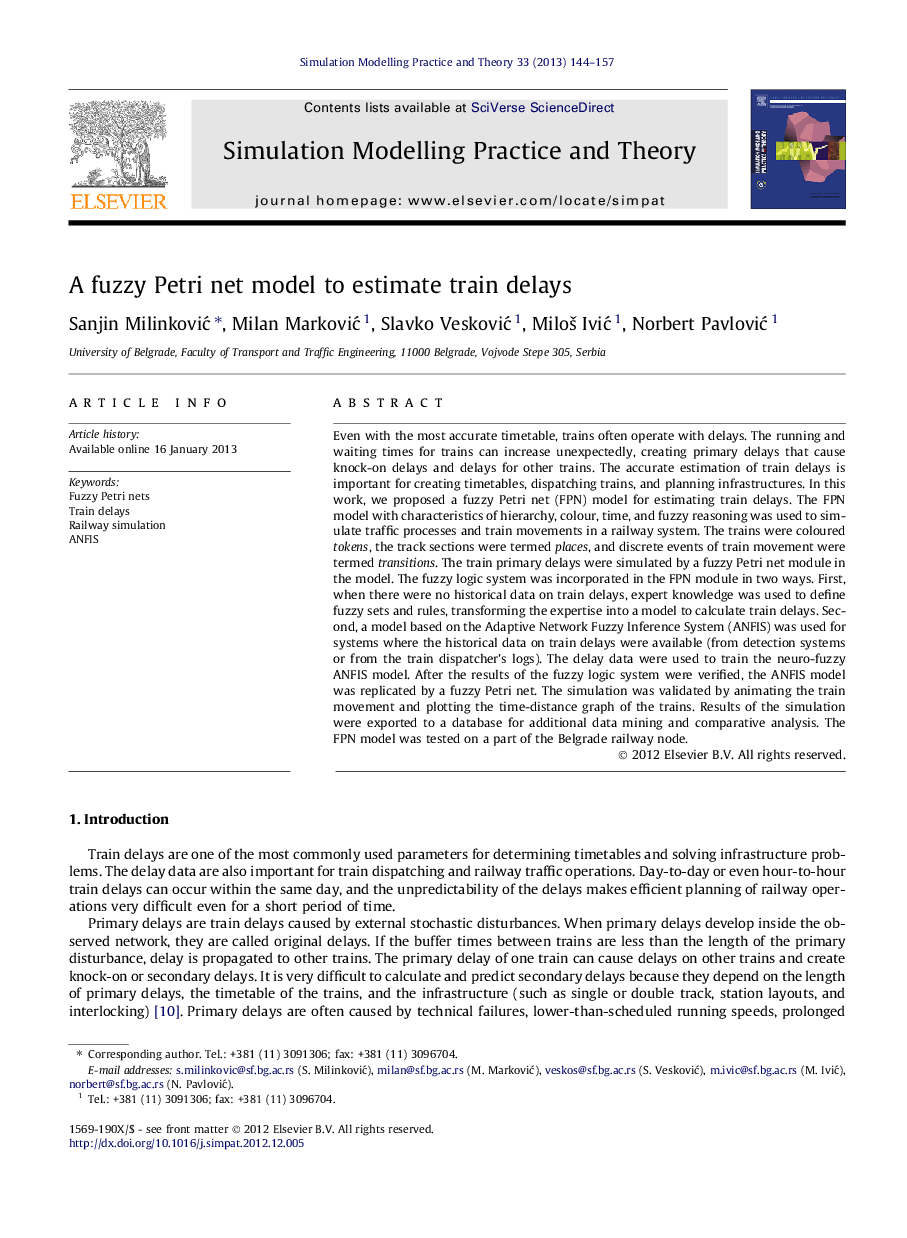| کد مقاله | کد نشریه | سال انتشار | مقاله انگلیسی | نسخه تمام متن |
|---|---|---|---|---|
| 492521 | 721612 | 2013 | 14 صفحه PDF | دانلود رایگان |

Even with the most accurate timetable, trains often operate with delays. The running and waiting times for trains can increase unexpectedly, creating primary delays that cause knock-on delays and delays for other trains. The accurate estimation of train delays is important for creating timetables, dispatching trains, and planning infrastructures. In this work, we proposed a fuzzy Petri net (FPN) model for estimating train delays. The FPN model with characteristics of hierarchy, colour, time, and fuzzy reasoning was used to simulate traffic processes and train movements in a railway system. The trains were coloured tokens, the track sections were termed places, and discrete events of train movement were termed transitions. The train primary delays were simulated by a fuzzy Petri net module in the model. The fuzzy logic system was incorporated in the FPN module in two ways. First, when there were no historical data on train delays, expert knowledge was used to define fuzzy sets and rules, transforming the expertise into a model to calculate train delays. Second, a model based on the Adaptive Network Fuzzy Inference System (ANFIS) was used for systems where the historical data on train delays were available (from detection systems or from the train dispatcher’s logs). The delay data were used to train the neuro-fuzzy ANFIS model. After the results of the fuzzy logic system were verified, the ANFIS model was replicated by a fuzzy Petri net. The simulation was validated by animating the train movement and plotting the time-distance graph of the trains. Results of the simulation were exported to a database for additional data mining and comparative analysis. The FPN model was tested on a part of the Belgrade railway node.
► The fuzzy Petri net (PN) model was used to estimate train delays on the Belgrade railway node.
► The high-level PN model was used to simulate traffic processes.
► The trains were coloured tokens, the sections were places, and the train movements were transitions.
► The initial train delays were calculated using a fuzzy Petri net (FPN) module.
► The FPN module was defined by expert knowledge (fuzzy logic) or by detected train delays (ANFIS).
Journal: Simulation Modelling Practice and Theory - Volume 33, April 2013, Pages 144–157